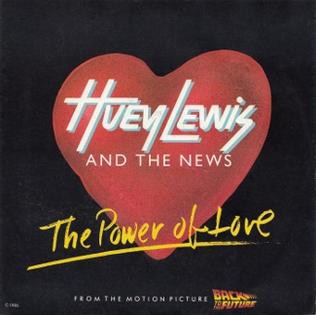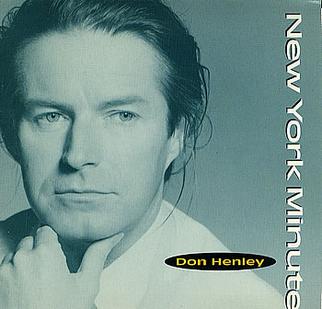 “Take On Me” by a-ha is more than just a song. It’s a generational anthem that defied the odds, an audiovisual experience that pushed the boundaries of its time, and a triumph of persistence, reinvention, and youthful optimism. Released in 1985 by the Norwegian trio a-ha, “Take On Me” became a global hit that not only defined the MTV era but also created one of the most enduring legacies in pop music history. With its swirling synths, falsetto-laced chorus, and iconic music video, “Take On Me” is a perfect encapsulation of what made 1980s pop culture so vibrant, experimental, and emotionally resonant.
“Take On Me” by a-ha is more than just a song. It’s a generational anthem that defied the odds, an audiovisual experience that pushed the boundaries of its time, and a triumph of persistence, reinvention, and youthful optimism. Released in 1985 by the Norwegian trio a-ha, “Take On Me” became a global hit that not only defined the MTV era but also created one of the most enduring legacies in pop music history. With its swirling synths, falsetto-laced chorus, and iconic music video, “Take On Me” is a perfect encapsulation of what made 1980s pop culture so vibrant, experimental, and emotionally resonant.
The story of “Take On Me” begins not with a hit single, but with a struggle. Before a-ha conquered the charts, they were an unknown band from Norway with a vision that sounded alien to their surroundings. Comprised of lead singer Morten Harket, keyboardist Magne Furuholmen, and guitarist Paul Waaktaar-Savoy, a-ha had been laboring to break into the UK music scene. The early version of “Take On Me” was first recorded in 1984, and while it had potential, it failed to make an impact upon release. Rather than give up, the band and their label, Warner Bros., re-recorded and remixed the track several times, culminating in the definitive 1985 version produced by Alan Tarney. That single release would transform the song from a curiosity into a cultural monolith.
Musically, “Take On Me” is a masterclass in synth-pop construction. Its opening synth riff, created by Furuholmen, is instantly recognizable and utterly infectious, a musical phrase that feels like it was plucked from the collective unconscious of the 1980s. The song is propelled by pulsing electronic beats, warm synthesizers, and an uptempo rhythm that borders on euphoria. But the true standout is Morten Harket’s vocal performance, especially during the iconic chorus where he ascends into a high falsetto that few singers could match. That soaring note on the line “I’ll be gone / in a day or two” became a kind of vocal Everest for aspiring singers, and its haunting beauty is one of the most indelible moments in pop music.
But “Take On Me” was not simply a radio hit — its success was supercharged by its groundbreaking music video. Directed by Steve Barron, who also directed videos for Michael Jackson, Madonna, and Toto, the video for “Take On Me” was a marvel of visual storytelling. Using a revolutionary blend of live-action and rotoscope animation, the video tells the story of a woman who is pulled into a comic book world by a mysterious, illustrated man — Morten Harket himself. The pencil-sketch animation, fluid movement, and imaginative transitions made it look like nothing else on MTV at the time. It was romantic, action-packed, whimsical, and touching — a perfect visual companion to the song’s themes of escape, longing, and ephemeral connection.
The video won six awards at the 1986 MTV Video Music Awards, including Best New Artist and Best Concept Video. It wasn’t just a promotional tool; it was a work of art that elevated the song into another realm of cultural relevance. At a time when MTV was becoming the arbiter of music stardom, “Take On Me” became a flagship example of how the visual and the auditory could be fused into something truly magical.
Lyrically, “Take On Me” is deceptively simple yet emotionally potent. It’s a love song, yes, but one filtered through a lens of uncertainty, impermanence, and almost metaphysical yearning. The narrator is caught between desire and doubt, asking someone to “take on me” — to accept him, to join him, to risk the vulnerability that comes with love. But he also acknowledges that he “can’t say” what life holds, and that he might be “gone in a day or two.” It’s this tension between hope and fear, between love’s possibility and its fragility, that gives the song its emotional weight. The words are vague, but their feeling is specific. Like many great pop songs, it resonates less through literal meaning than through emotional truth.
For a-ha, “Take On Me” was both a blessing and a burden. It catapulted them to international fame, topping the Billboard Hot 100 in the U.S. and hitting number one in numerous other countries. But its massive success also threatened to overshadow the band’s broader artistic ambitions. Too often dismissed as a one-hit wonder in the U.S. (a label that’s inaccurate, as they had several hits in Europe and a strong following worldwide), a-ha struggled for years to escape the long shadow of “Take On Me.” Yet rather than be confined by it, they ultimately embraced it. The band continued making music for decades, often with a more serious, introspective tone than their early pop work would suggest. And “Take On Me” itself has grown more appreciated over time — not as a kitschy relic, but as a genuinely brilliant pop composition with emotional resonance and creative ambition.
Over the years, “Take On Me” has experienced several revivals and reinterpretations, keeping it alive in the cultural imagination. It was famously covered in acoustic form by a-ha themselves in the early 2000s, with the stripped-down version revealing the song’s underlying melancholy and compositional strength. That version went viral decades later, introduced to younger audiences through television and TikTok. The song also appeared in films, TV shows, commercials, and video games, cementing its status as a pop culture staple. Even the original video was remastered in 4K and posted to YouTube, where it has amassed over 1.8 billion views, introducing the song to new generations and reaffirming its timeless appeal.
There’s something eternal about “Take On Me.” It’s a song that carries with it the wistful idealism of youth — the hope that love can conquer distance, fear, or fate; the belief that something extraordinary might happen if we’re just brave enough to take a chance. That’s what gives the song its staying power. Beneath its effervescent melody and stylish production is a core of sincerity that refuses to age. It’s why listeners born long after 1985 still connect with it. It’s why people continue to attempt that impossible falsetto in karaoke bars. And it’s why the song continues to inspire remixes, mashups, tributes, and loving parodies.
“Take On Me” is more than a nostalgic touchstone — it’s a rare example of pop perfection, the kind of song that exists outside of trends, genres, or generations. It’s pure feeling, rendered in synth and voice and animated dreamscapes. A-ha may have gone on to do many things — and their catalog is far deeper and more complex than they’re often given credit for — but with “Take On Me,” they didn’t just record a hit. They captured lightning in a bottle. They made a song that feels like a sunrise, sudden and full of possibility.
When Morten Harket hits that high note, he’s not just singing. He’s flying. And for three and a half minutes, we get to fly with him.


